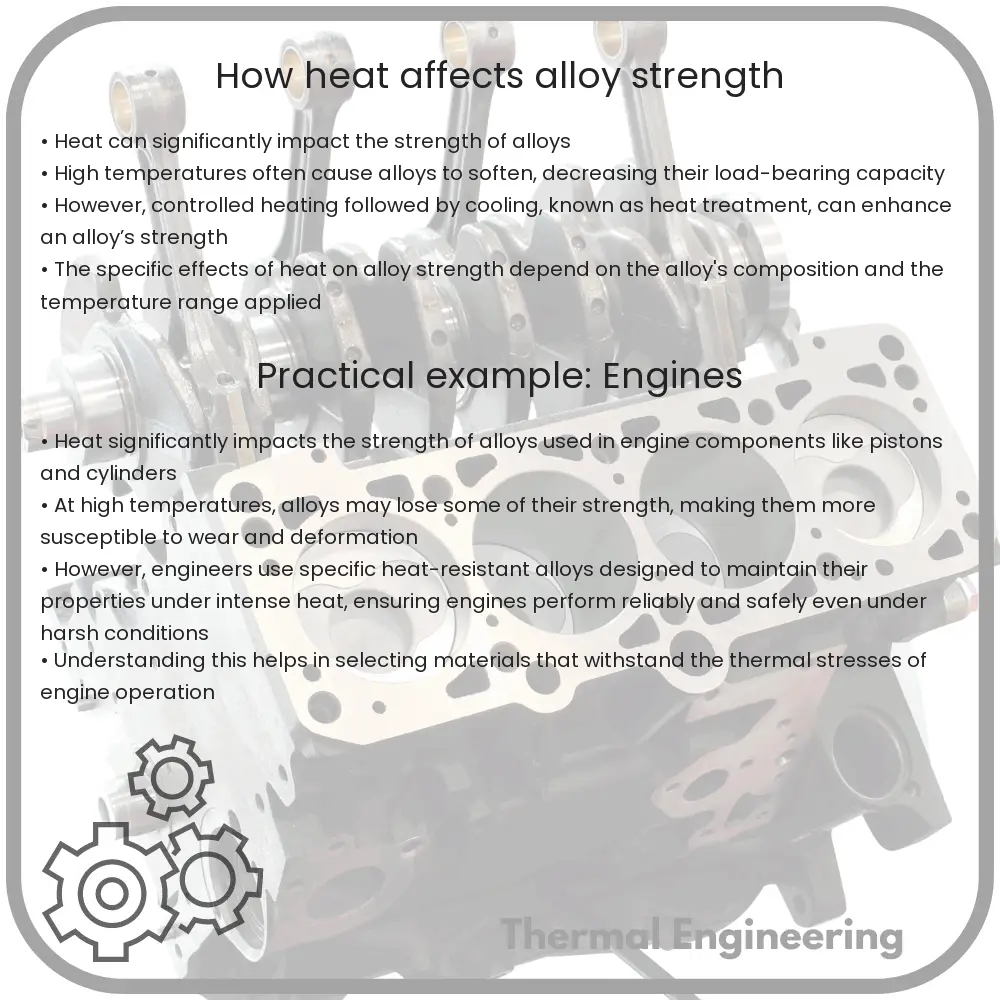Learn how temperature influences alloy strength through thermal expansion, phase transformations, and affects dislocation density and grain growth.

Understanding How Heat Affects Alloy Strength
Alloys are combinations of two or more metals, or of metals with certain non-metals, like carbon, designed to enhance specific properties such as strength, ductility, and corrosion resistance. A critical aspect of engineering alloys involves understanding how their properties change with temperature. This knowledge is crucial in applications ranging from automotive engine parts to aerospace components where operating conditions may involve extreme temperatures.
Thermal Expansion and Phase Transformations
When an alloy is subjected to heat, it undergoes several changes that can affect its strength. The initial effect of heating is thermal expansion, where the atoms in the metal vibrate more vigorously and occupy more space. Although this does not inherently weaken the metal, it changes dimensions and can affect structural integrity if not properly accounted for.
More critically, heat can lead to phase transformations. These are changes in the microscopic structure of an alloy, as different phases of the material become stable at different temperatures. For instance:
- Austenite to Martensite Transformation in steel: Many steels are subjected to a heat treatment process called quenching, where high temperatures form austenite, a face-centered cubic structure, which transforms into martensite, a body-centered tetragonal structure, when rapidly cooled. This transformation greatly increases the hardness and strength of the steel.
- Precipitation Hardening: Some alloys, like certain grades of aluminum and stainless steel, increase in strength through a process known as precipitation hardening or age hardening. This involves heating the alloy to a temperature that allows certain elements to dissolve and then cooling it at a rate that allows the dissolved elements to precipitate out, forming new phases within the metal that hinder dislocation movement, thereby increasing strength.
Effects of High Temperatures
At high temperatures, most alloys begin to lose strength. Two key mechanisms responsible for this are:
- Reduction in Dislocation Density: Heat provides energy for dislocations (defects in the crystal lattice of metals essential for plastic deformation) to move and rearrange, leading to a material with fewer dislocations, which decreases its ability to harden under stress.
- Grain Growth: Prolonged exposure to high temperatures can cause the small grains in the metal to combine into larger grains. Larger grains generally mean weaker metal because grain boundaries are areas where dislocations can be halted, and fewer grain boundaries mean fewer barriers to dislocation movement.
Understanding how heat affects alloy strength is not only important for the development of new materials but also for predicting and improving the performance of existing materials under varying temperature conditions. Engineers must consider these factors when designing and selecting materials for use in high-temperature environments.
Conclusion
The relationship between heat and alloy strength is a fundamental consideration in materials science and engineering. By manipulating heat treatment conditions, engineers can tailor the properties of an alloy to meet specific needs. Advances in this field continue to push the boundaries of what is possible, leading to more efficient, reliable, and durable materials in industries across the globe.